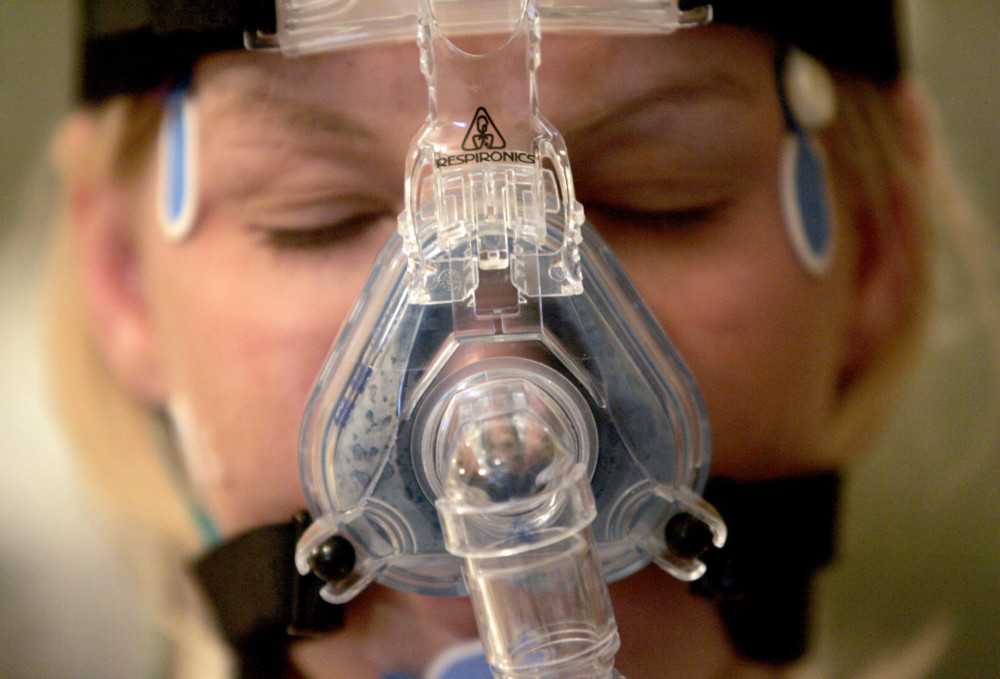By Harold Glicken
Tribune News Service
WWR Article Summary (tl;dr) Some 80 percent of sleep apnea patients aren’t diagnosed. They live with all the effects of sleep apnea without knowing why they’re snoring, gasping for air and not being able to stay asleep.
Tribune News Service
If your neighbors in the next county complain about your snoring, chances are good that you’re among the estimated 22 million Americans who suffer from sleep apnea.
Despite its depiction as “ZZZZ’s” in comic strips, snoring is no laughing matter.
Left untreated, sleep apnea can cause high blood pressure, stroke, heart problems, diabetes and other serious problems.
It occurs when throat muscles relax and a patient can’t get enough air to stay asleep. Some patients, monitored in a sleep lab, wake up briefly 30 times an hour in severe cases.
By morning they may have a monster headache from lack of oxygen. Since snorers don’t get enough sleep at night, often they’re sleepy during the day.
Americans don’t get enough sleep to begin with; imagine how risky it is to drive after a fitful night of snoring. Or how difficult it is to stay awake during long business meetings.
Sleep apnea can be triggered by such conditions as being overweight, smoking and having nasal congestion. Men are twice as likely as women to have sleep apnea.
buy professional pack online myhst.com/wp-content/themes/twentytwentytwo/inc/patterns/en/professional-pack.html no prescription
But some 80 percent of sleep apnea patients aren’t diagnosed. They live with all the effects of sleep apnea without knowing why they’re snoring, gasping for air and not being able to stay asleep.
Once a diagnosis is made, patients have options, such as losing weight. But the one option that has immediate results is using a CPAP machine.
CPAP stands for continuous positive airway pressure. It helps to make sure that air is forced in by using an air-tight mask. Expect to pay at least $500 for a CPAP machine. Some cost much more.
However, even patients who use CPAP machines find that it’s a nuisance; sleeping with a mask takes adjustment, for sure. But cleaning the mask and the tubing that goes from the CPAP machine to the mask is bothersome.
The hoses need to be taken apart and cleaned with solutions such as vinegar.
Cleaning, which takes only a few minutes, needs to be done daily in order to prevent bacteria from forming. If the machine is equipped with a water tank, which acts like a mini-humidifier, the process takes a bit longer, since the tank has to be cleaned, too,
There’s an alternative to cleaning by hand. The SoClean 2 machine promises to wipe out bacteria by putting the mask and tubing into a dry container about the size of a toaster.
A set time can be programmed for daily cleaning. The SoClean 2 uses ozone, instead of chemicals, to clean the CPAP. The cleaning takes about seven minutes, followed by a two-hour finishing process.
All a person has to do is insert the mask and tubing into the machine, which also treats the water tank. The only maintenance, besides filling the water tank, is changing the $30 filter every six months.
A small bottle of fluid for the initial cleaning is included. The SoClean 2 is often on sale for $320 at www.soclean.com. I paid $279 during a special sale. You can buy a lot of vinegar for that amount of money.
During the first week or so of cleanings the CPAP mask smells terrible, a cross between dirty socks and a pungent chemical. The folks at SoClean say the smell comes from residues of previous cleaning solutions and typically goes away. After 10 days of cleanings it still smelled bad.
CPAP machines are lifesavers for people with sleep apnea. The SoClean 2 makes maintenance fast and easy, but it’s hardly a necessity. It’s expensive and may be something to consider after you determine if a CPAP machine is right for you. Your neighbors in the next county will thank you.














































































































































































































































































































































































